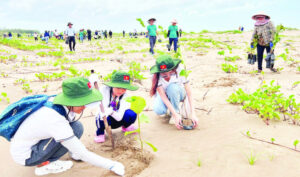Na Vi Village in the northern province of Cao Bang charms all nostalgic souls with its ancient stone houses and unique traditions that have been maintained by generations of ethnic Tay people.
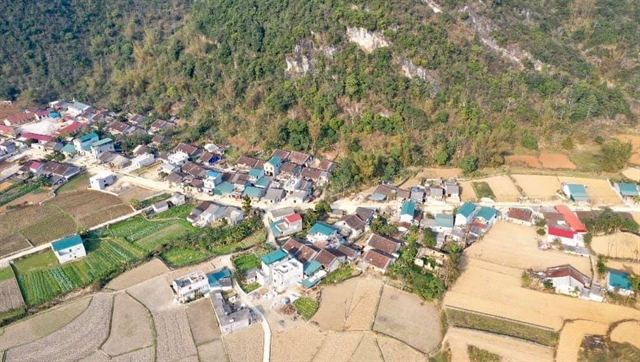
An aerial view of Na Vi Village. VNS Photo Ha Cuong
Located at the foot of Phia Cao Mountain, about 100km from Cao Bang City, the village is home to 110 households with 349 people, most of them are Tay ethnics.
Taking a walk along the flat paved road, on which both sides are green paddy fields and rows of bamboo, visitors can immediately feel the calm and the peacefulness of the area. Through the early morning mist, the ancient stone houses gradually appear at the end of the winding road. Traces of time can clearly be seen in the faded colours of their tiles.
Nong Van Thinh, vice chairman of the Minh Long Commune People's Committee, said: “This village has a very long history. Each of the houses was built by local people with stone, mainly quarried in the surrounding mountains, so they are very durable. After more than 100 years, the stone houses still stand the test of time.”
Among nearly 100 stone houses in Na Vi, 40 retain their original architecture and have been home to three to four generations of the Tay living together.
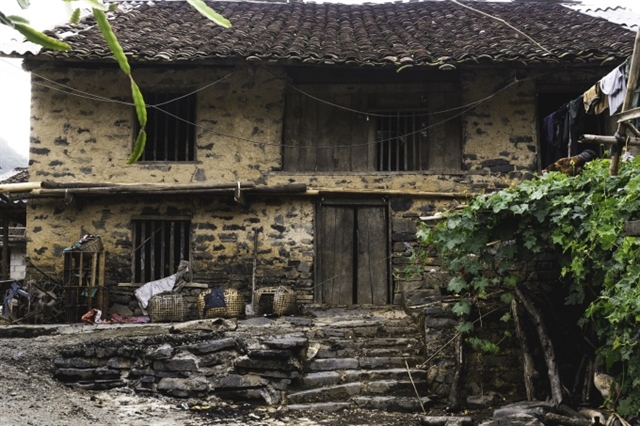
One of the ancient stone houses in Na Vi Village. VNS Photo Ha Cuong
According to the elderly, these stone houses might be 100 or even 150 years old. Whenever one is broken down, its owner will find appropriate stones from nearby mountains and use sand in the river or stream beds to fix it themselves, which helps preserve its original structure over time.
It takes from one to two years to complete a three-room stone house in Na Vi Village. Each house is from 7-8m high and roofed with terracotta tiles. Created from stones of various sizes, stacked and bonded with a mixture of limestone and sand, the 30cm-thick walls are firm and solid, helping to make the house cool in summer, and warm during the harsh winter of the north.
Besides the ancient houses, Na Vi is also preserving a hundred-year-old handloom.
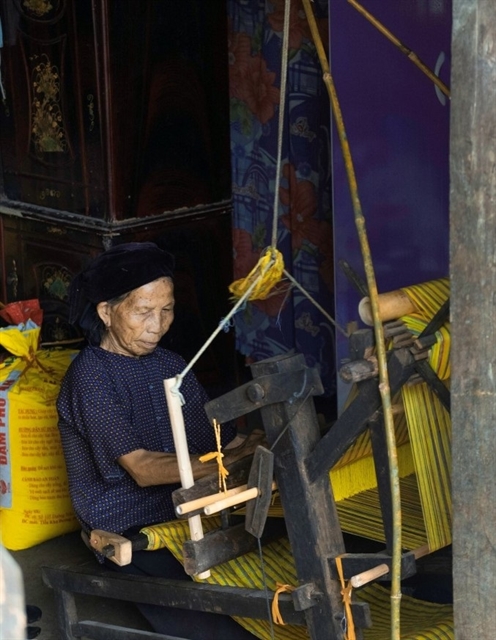
Nong Thi Phuong works at the last traditional handloom of the village. VNS Photo Ha Cuong
Nong Thi Phuong, an 81-year-old fabric weaver in Na Vi, said: “In the past, weaving was considered a norm to evaluate a Tay woman's virtue, ingenuity, and diligence. Therefore, most of the women in the village were very skilful in spinning and weaving. Many families had one or two handlooms for making costumes and household items like curtains, blankets and baby clings.”
According to her, the woven fabrics also have both material and cultural meanings.
“People in the village used to weave various items as a dowry for their daughters when they got married to supplement their future daily needs, such as closing, curtains, blankets, baby slings or bags. These products would accompany the women in the village from birth to death,” she added.
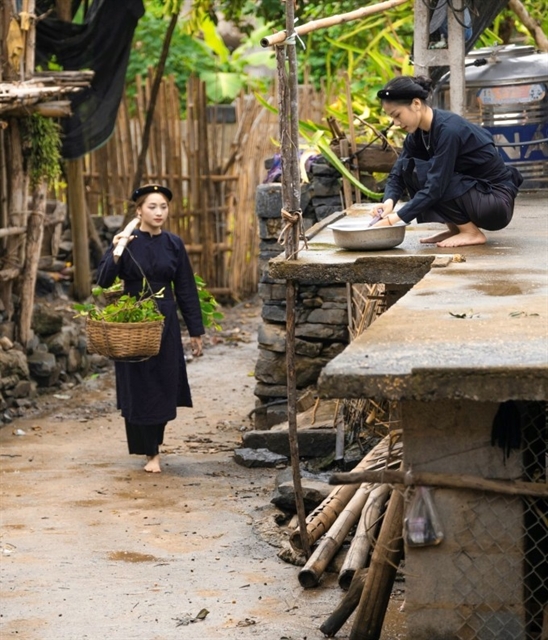
Tay women in Na Vi Village in traditional clothes. VNS Photo Ha Cuong
The traditional costumes of both Tay men and women are woven from cotton yarn and dyed indigo, having almost no decorative patterns. The women’s clothes might include linen indigo belts. Though most of the villagers have switched to wearing modern clothes during their daily activities, for convenience, traditional clothes are indispensable on special occasions like weddings or funerals.
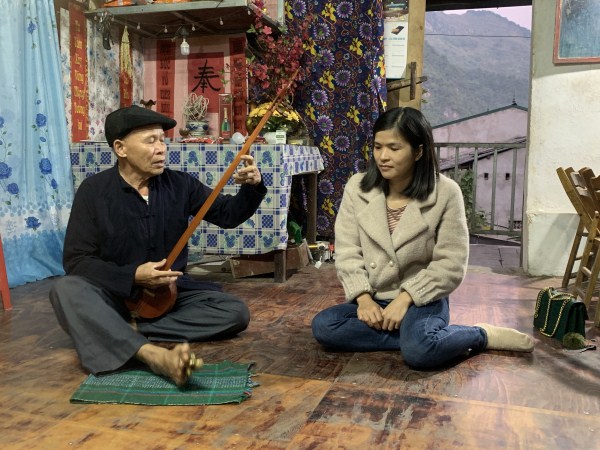
A man in Na Vi Village performs then singing for a visitor. Photo baocaobang.vn
Visitors to the border village might also have a chance to listen to a traditional art form of the Tay – then singing, which was recognised as an Intangible Cultural Heritage of Humanity by UNESCO.
Like traditional clothes, then singing, accompanied by the sound of tinh musical instrument, is an integral part of local rituals, festivals and fairs. It is also a means for the local youth to confess their love for their boyfriends or girlfriends.
Nong Duc Tuong, a member of the then singing club of Minh Long Commune, said: “Ever since I was a child, I have been immersed in the rhythms and lyrics of then songs of my father and our neighbours. I was taught about the melodies by the elderly when growing up, which were gradually absorbed into my mind and became a passion.”
Even though he is 82 now, Tuong is still collecting ancient tunes, composing new then songs praising the native land and people, and teaching the younger generations then singing, to pass down his passion.
A visitor to the village, photographer Vu Khac Chung, said he was particularly impressed with the original structure of the ancient houses in Na Vi that have been preserved by local people, as well as the hospitality of the villagers and the naïve smiles of the children.
From Na Vi Village, tourists could also visit numerous nearby tourist attractions of Cao Bang like Nguom Khu Cave, Phia Cao Mountain, and To Thi Hoan Temple.
The local authority is building a plan to turn Na Vi into a community-based tourism destination with homestay facilities to meet the tourists’ wish to spend the night in the lost-in-time village.
Phuong Ha








